Last summer I worked at one of our commercial, hybrid seed-corn production sites in Illinois. During that time, I learned all about how the hybrid corn seeds farmers plant are produced. Since then, I accepted a new role in Iowa at a pre-commerical corn site. In short, that means I help produce the inbred corn lines, or parent seed, that make up those hybrids!
As it turns out, the process is incredibly complex and labor intensive. I hope this post can pass along the appreciation I now have for all the work that goes into producing seeds for farmers!
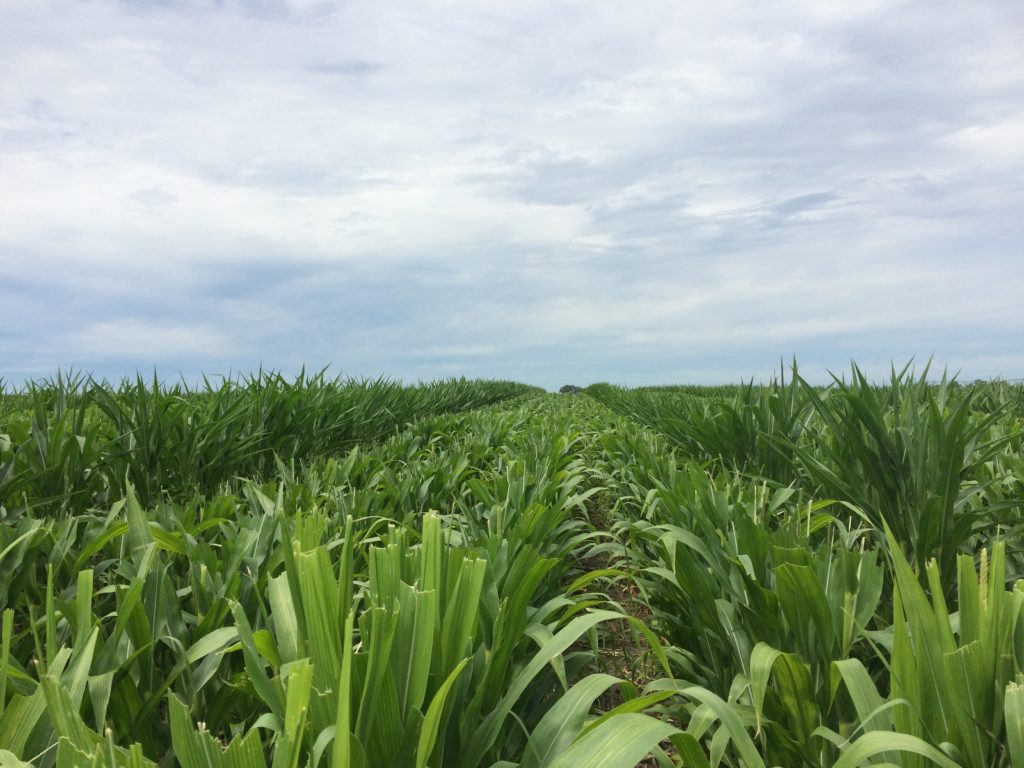
Hybrid seed corn production field
Developing superior inbreds
It might surprise some people to learn the majority of the life cycle of a Monsanto corn line is spent as a conventional, non-GMO plant. That’s because our corn breeders spend years using germplasm and native traits from all over the world to develop superior genetics with traditional breeding methods. They screen and test hundreds of thousands of lines before making decisions on which ones should be advanced in the pipeline.
As a colleague and corn breeder described to me, traits such as insect and herbicide resistance are added later to protect the potential of the genetics breeders like him spent years developing. After years of breeding, testing, and finally trait integration, a fraction of those lines get handed off to my group in pre-commercial production for further development.
Purifying and increasing
My piece of the puzzle in Monsanto’s pipeline is small, but important. My team is tasked with purifying and increasing the inbred lines passed on to us from the breeding/trait integration groups. You see, we only get several ears worth of seed from these groups, so we must increase this handful of seeds to an amount where large scale increases can be performed and, eventually, hybrids can be created.
Because we are dealing with inbred seeds, we see lots of weird segregation expressed. It’s our job to identify and discard weak sources so only the best, most pure seeds are passed down the pipeline.
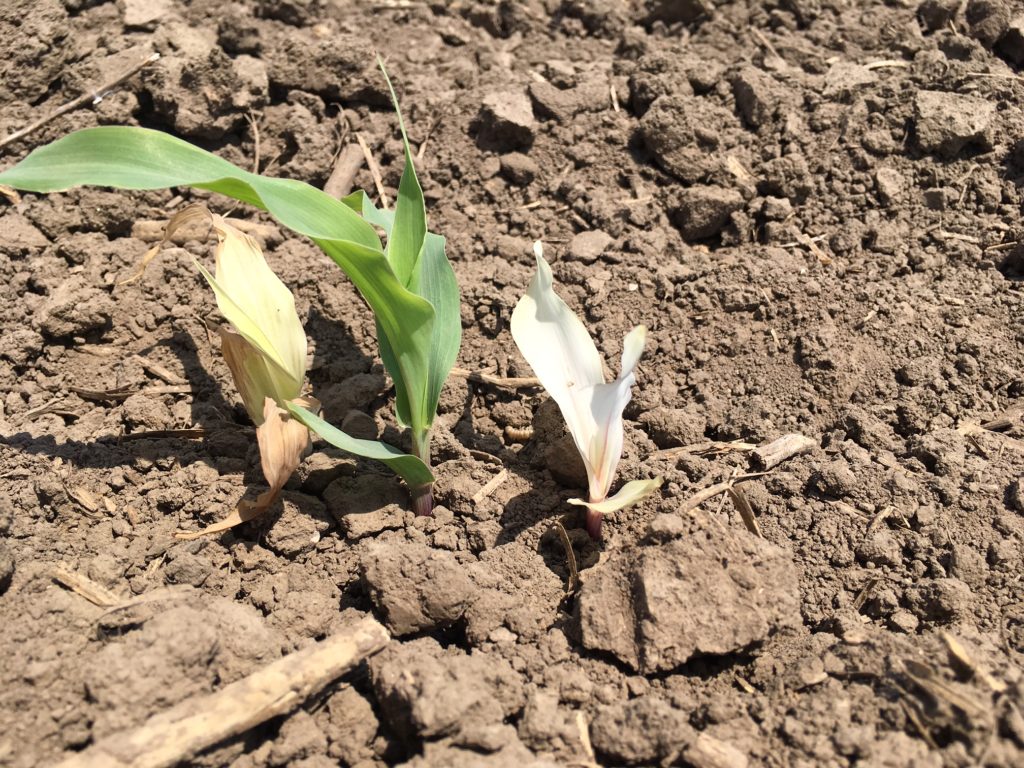
Albino corn plants
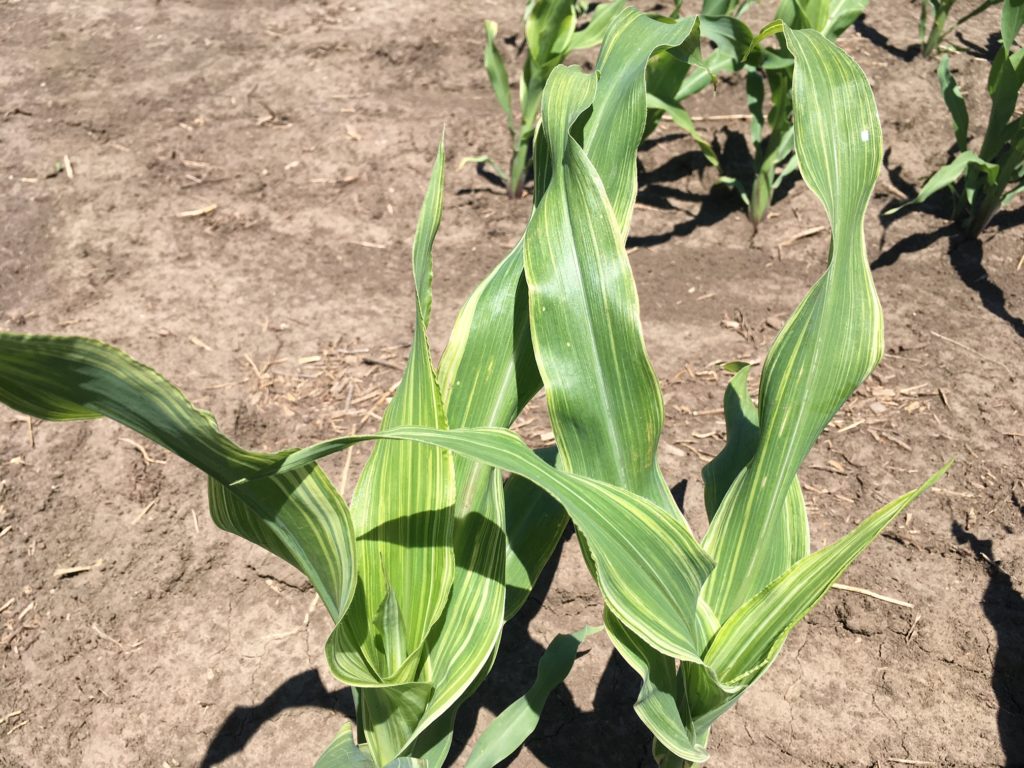
Striping
Planting
As I mentioned above, we only receive several ears worth of seed per inbred from trait integration. Each packet of seed we receive was shelled from a single ear. While all of these ears, or sources, from the same inbred will be planted side-by-sided in the same block, we make sure to know exactly which rows were planted from which source. This is because each ear from the same inbred line can have slightly different genetics and express various levels of segregation.
Thanks to tedious tracking and organization, we’re able to tell row-by-row which ear source the seeds we plant came from. This helps us discard entire sources that don’t meet our standards. For example, when I’m taking observations of my fields and I see four rows toegether with pour germination, I can look on my iPad and tell that all of those plants came from one ear source. With a few taps in my app, I can discard that ear source and those plants will never be harvested.
There are many discards we can do on a phenotypic level as we compare sources side-by-side in the field, but we also perform a multitude of lab tests from pre-planting, in the field, and post harvest to ensure genetic purity. Again, this is done on a source level so specific discards can be made without throwing out the whole inbred.
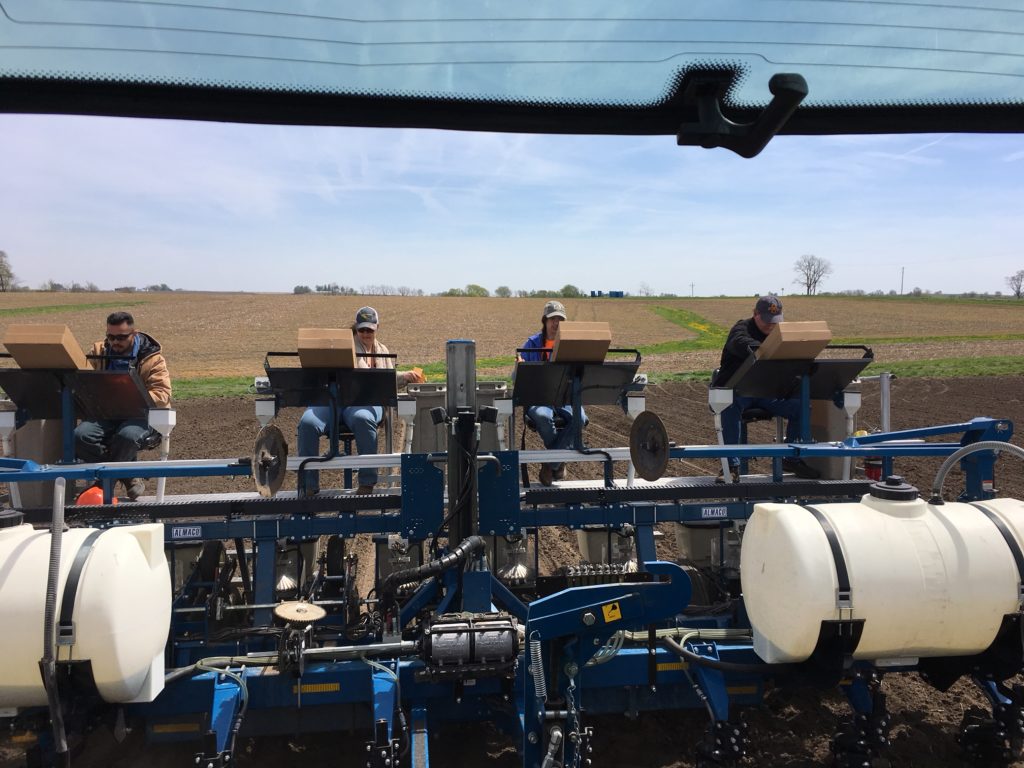
Riders dump small packets of seed into the cone planter
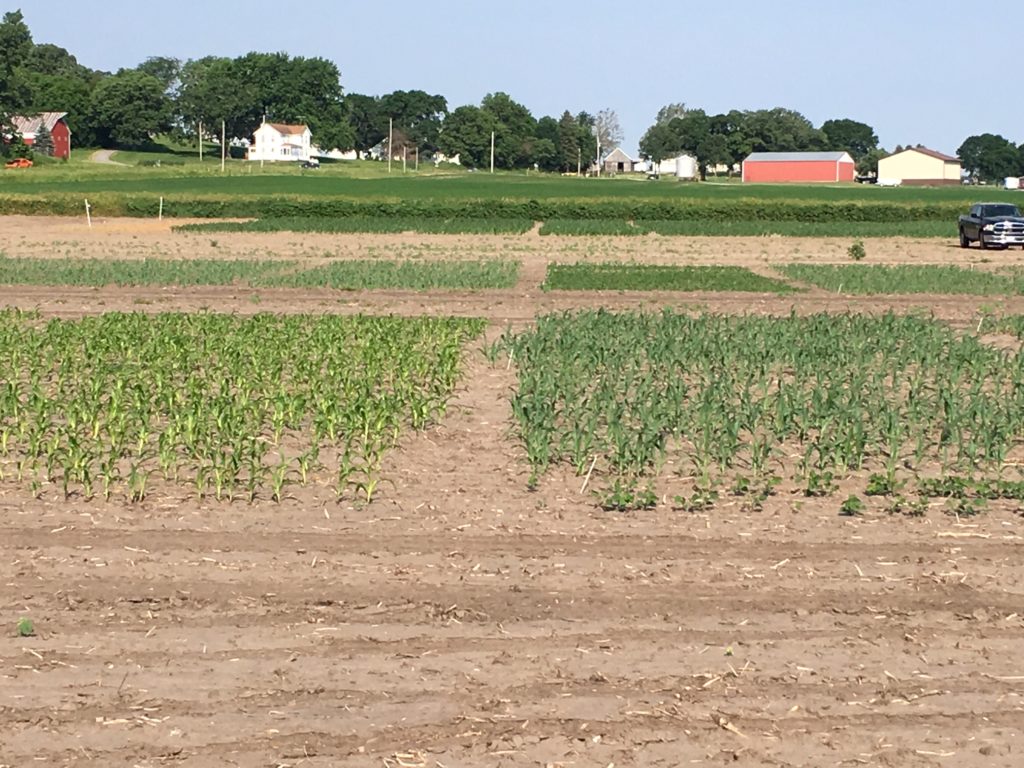
Different inbred lines planted in blocks
Hand-pollination
Now that we’ve done lots of testing and observations to discard the sources in the field we don’t want, it’s time to hand-pollinate the ones we do! I wrote a more detailed explanation of the birds and the bees of how corn reproduction works here, but in short, tassels are the male part and silks are the female part. We want to ensure pollen from the tassels of one plant are reaching the silks of the same plant for fertilization.
Just before silks start emerging, we place “shoot bags” over them to ensure no unwanted pollen is cross-pollinating them. Before the tassels start shedding pollen, we put a bag over them to capture it. Eventually, we will remove the shoot bag and replace it with the tassel bag containing all the pollen from the same plant. Wa-la!
To give you an idea of the mass amount of work this takes, we must do this across approximately 800,000 plants. If you’re following, that means we must touch these 800,000 plants 3 times (shoot bagging, tassel bagging, fertilization.) Four times total once you consider hand-harvest…
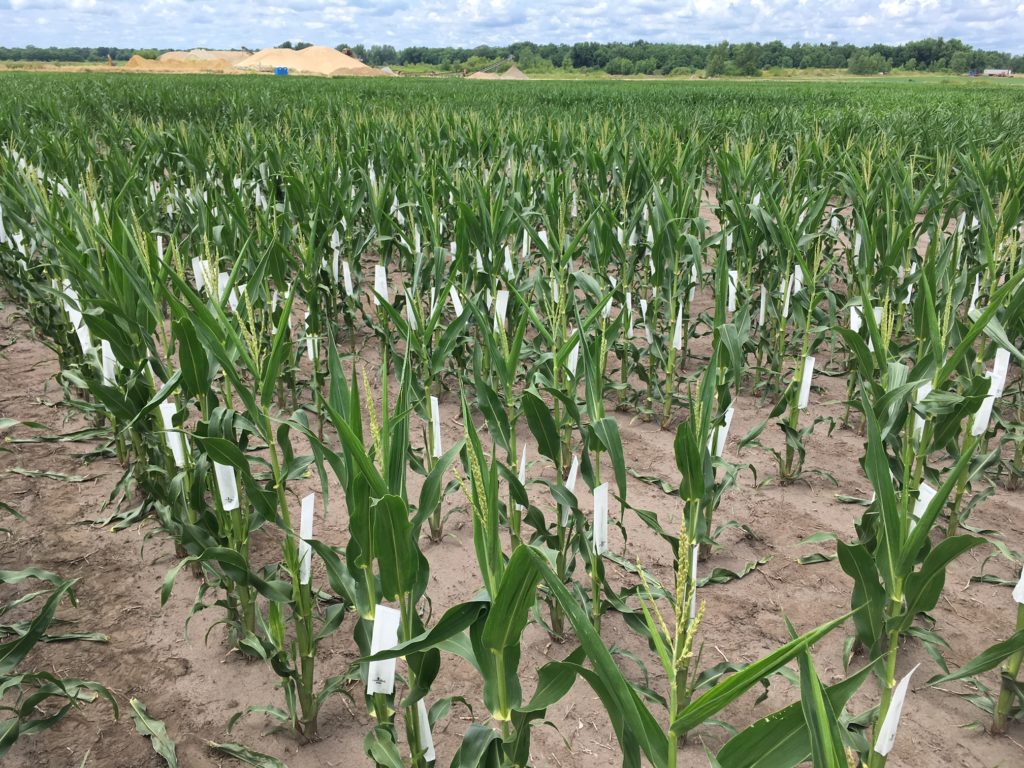
Shoot bags cover the emerging silks
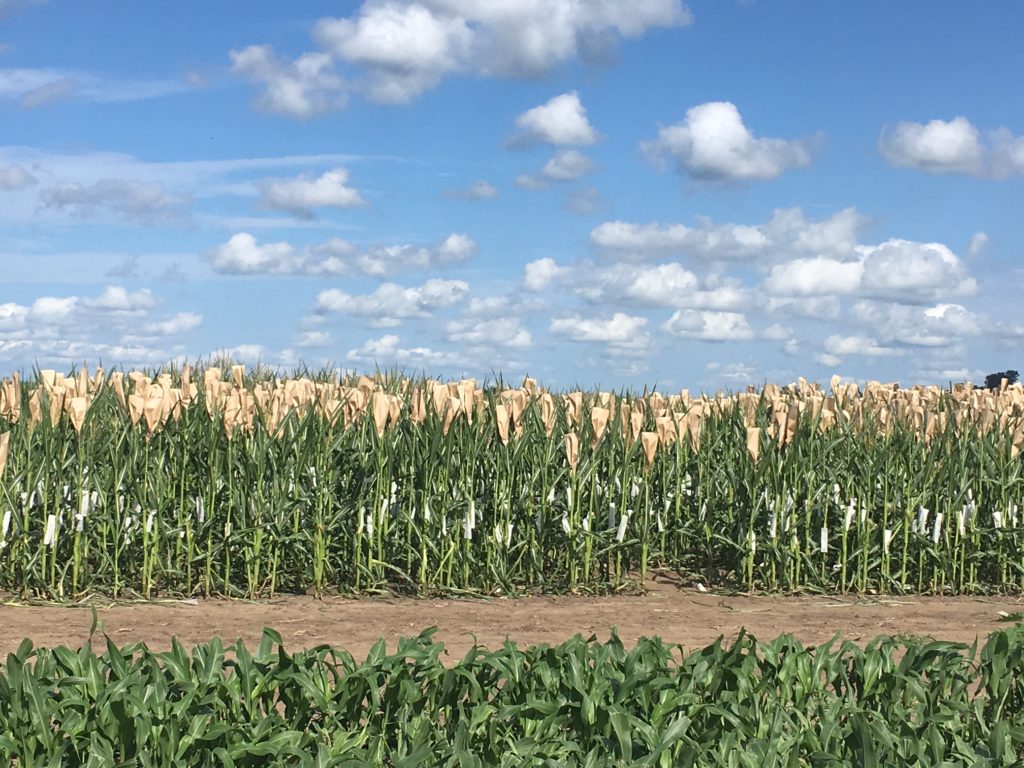
Tassel bags cover tassels to capture the pollen
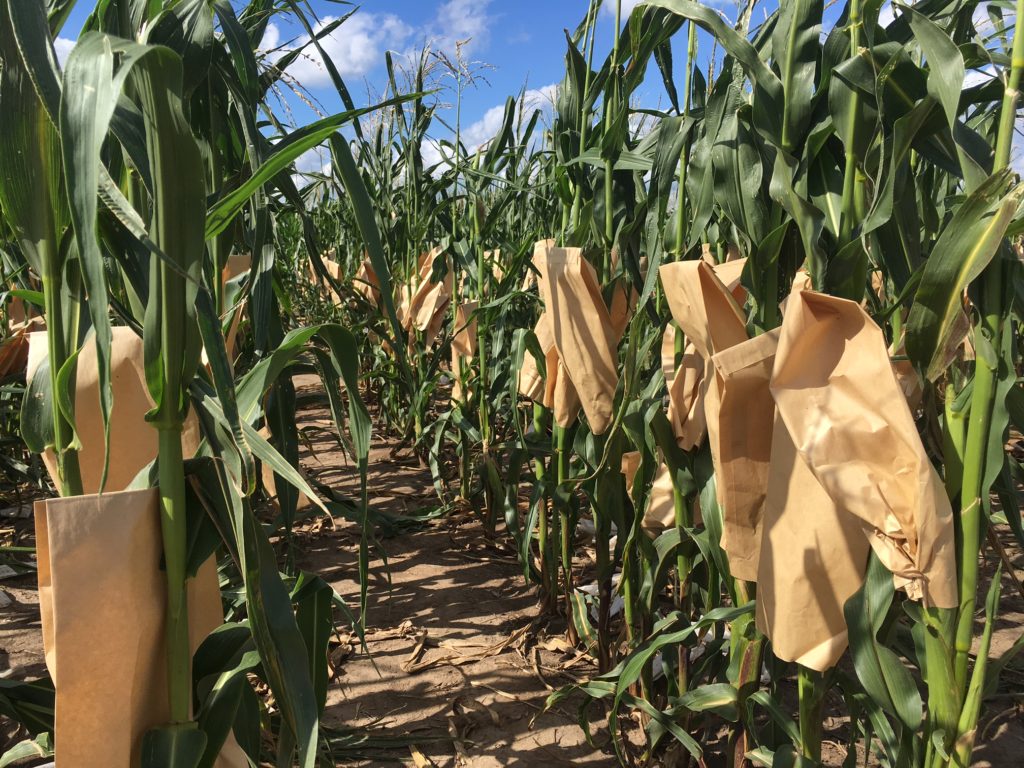
Shoot bags are removed and tassel bags are moved down to cover the silks
Hand-harvest
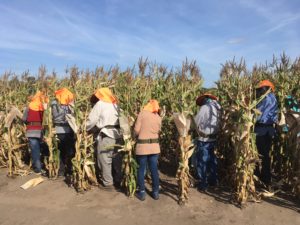
Hand-harvest
As you can imagine, harvest works a little different around here! Up to this point we’ve taken special care to keep sources separate, and that doesn’t stop with harvest.
Just like with hybrid production, our kernels are harvested on the ear. This ensures minimal amount of damage to the seed. Unlike hybrid production, it’s harvested by hand. Workers walk down each row and place ears into their own bag.
The main purpose of this is to get one last look at the ears, by row, before shelling. Even up until shelling, we discard ears that don’t conform to certain characteristics, such as cob color.
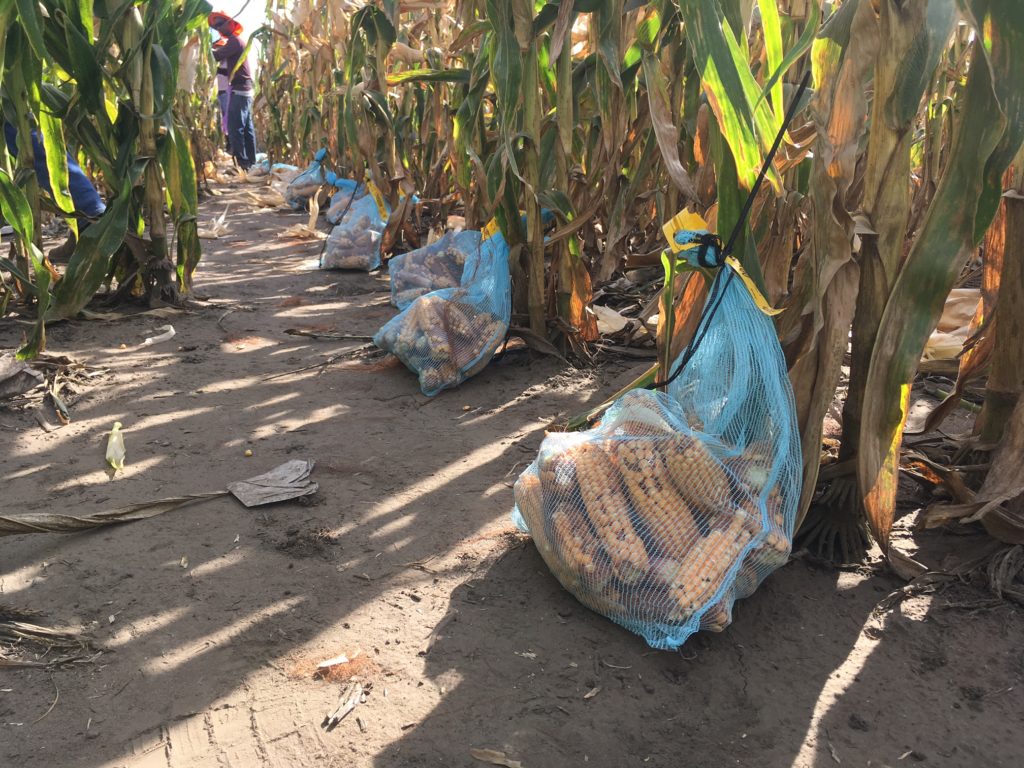
Ears from each row are bagged separately
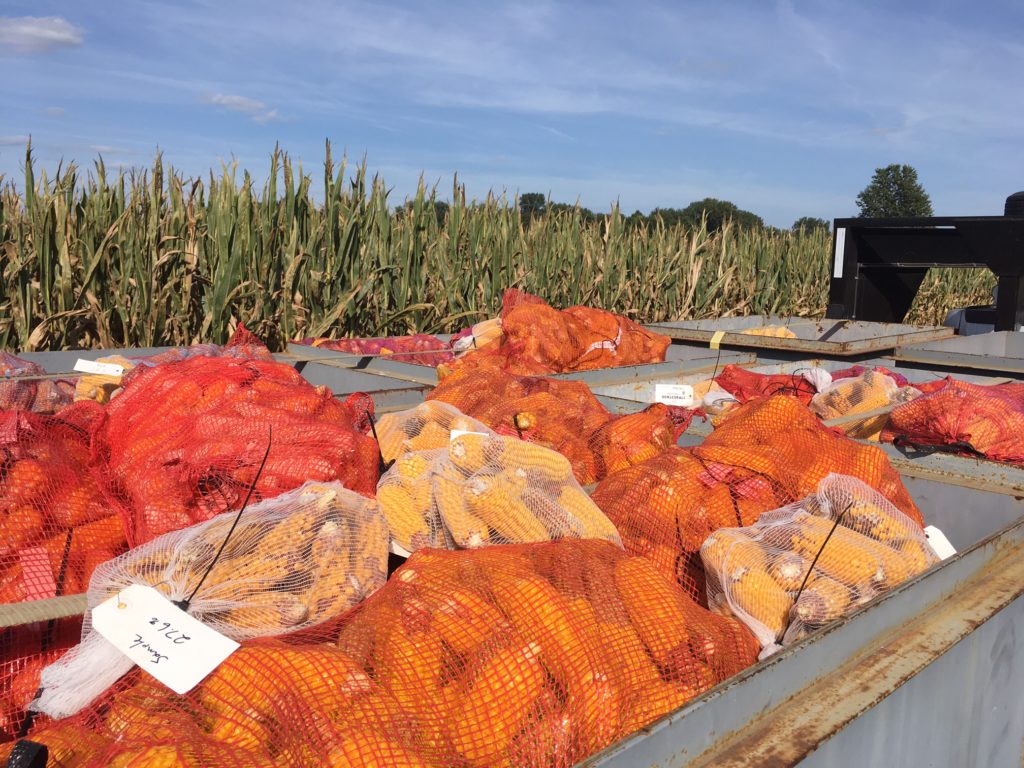
This makes for lots of bags of corn!
Next steps
Now that we’ve produced several bags of high quality inbred seed, only a fraction of the lines we increase will make it to the next step in the pipeline. Again, selections are made by breeders and planners so that only the best, most desirable genetics proceed. If the line is advanced, we will hand off the bags we produced to another pre-commercial site with a different function – to increase the seed to a quantity large enough for commercial hybrid production. The main difference here is that several acres of the same inbred will be planted and allowed to open pollinate.
Finally, after close to a decade of production, the lines are ready for hybrid production. Two inbred lines will be crossed at a commercial site and the resulting seeds will end up in a farmer’s field. Farmers have many different hybrids to choose from, and different inbreds make up each hybrid. Learn more about that process in my Hybrid Seed Corn Production 101 post! If you have any questions, be sure to comment below!
In July I did a takeover of the AgGrad SnapChat account. For a video snapshot of everything explained above, check it out!

March 23, 2019 at 4:36 AM
How about planting a parent hybrid into a remote areas whereby no pollen contamination may occur is it possible, the purpose is to about hard labor in putting silk shoot bags and tassel pollen shootbag, would it be effective? And would it be maintain the desired genetics for the male or female plant.
December 26, 2019 at 12:16 PM
Hi Edwin! You’re correct that it is possible to isolate fields of inbred corn such that the chance of cross pollination from nearby corn is greatly reduced. This is actually the next step after our hand-pollinated nurseries! We generate enough hand-pollinated seed to hand off for an increase in isolated, open pollinated fields. However, at my stage in the pipeline, we’re still making selections and discards to make sure only the best gets handed off to the next step. The hand-pollination allows for greater traceability as well as much less land footprint (if we had to account for isolation distance.)
March 20, 2020 at 1:39 PM
What site were you at in Illinois? I work in farmer city
March 20, 2020 at 1:42 PM
I was at Ashton!